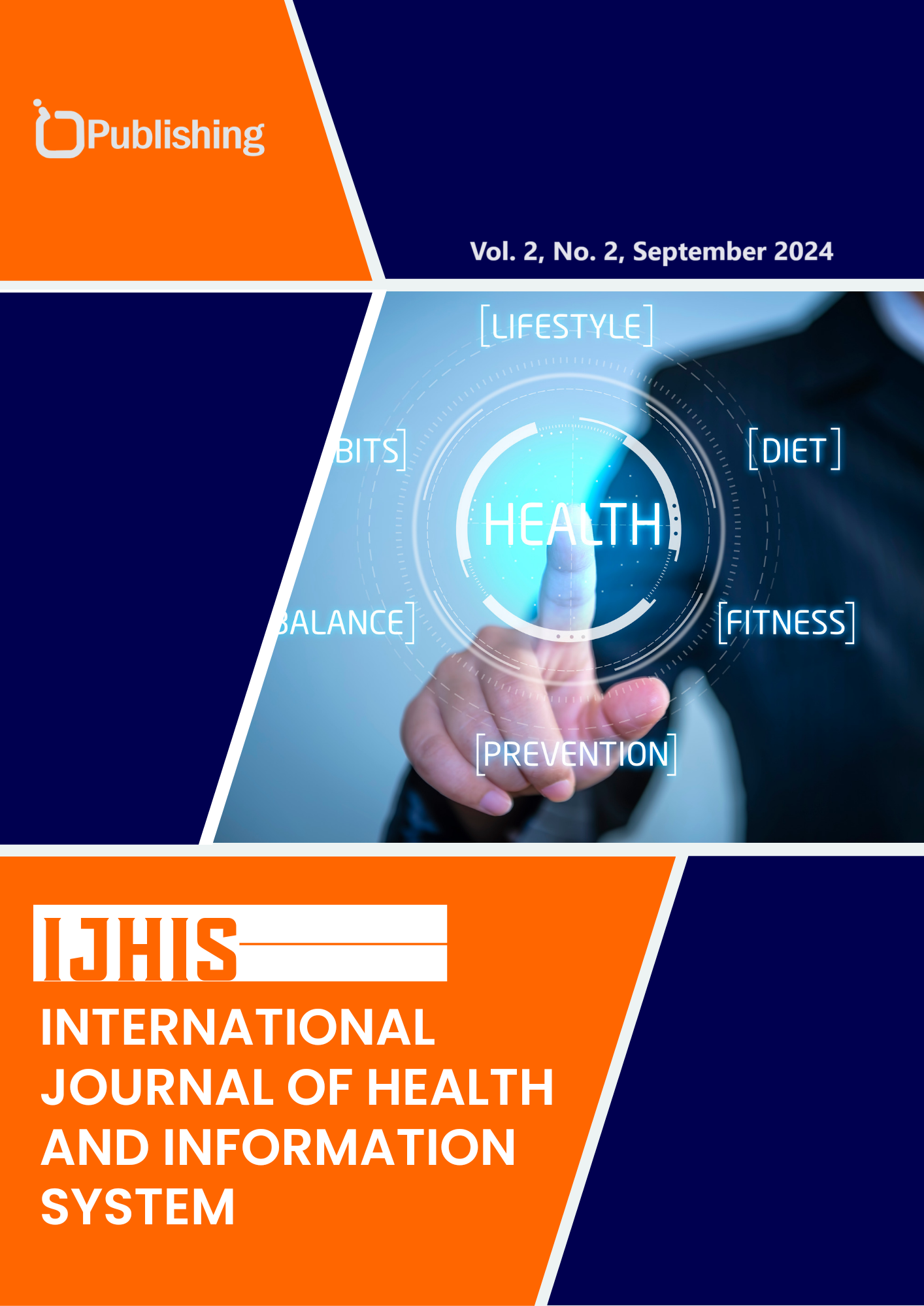The Intentions of Health Personnel Using UTAUT-Based Electronic Medical Records (Unified Theory of Acceptance and Use of Technology)
DOI:
https://doi.org/10.47134/ijhis.v2i2.43Keywords:
Performance expectancy, effort expectancy, facilitating condition, behavioral intention, social factorAbstract
The government's efforts as a form of supporting the Sustainable Development Goals (SDGs) in point 3 regarding health and welfare, the Indonesian government. By using good information technology, it is hoped that good quality health services will also be achieved. The existing conditions at the Jemur Sari Islamic Hospital (RSI) Surabaya show that there are still incomplete Subject, Object, Assessment, Plan (SOAP) components in EMR in 2022. The aim of this research is to review the use of UTAUT-based EMR. This type of observational research uses a cross sectional design. The research sample was taken by total sampling from the entire population, namely 45 officers at Jemur Sari Hospital, Surabaya. Data analysis using frequency descriptives. The research results show that average job fit on performance expectancy 3,48, perceive ease of use on effort expectancy 3,47, subjective norm on social influence 3,43, compatibility on facilitating conditions 3,53 and persuasiveness on behavioral intention 3,50. The results in the very good category and social factors are in the good category. The conclusion of this research is that it needs to be further improved in the aspects of extrinsic motivation, perceived behavioral control, social factors, improvements in complexity and enthusiasm.
References
Kemenkes, “Kemenkes Resmi Luncurkan Rekam Medis Elektronik Terintegrasi SATUSEHAT,” Kemenkes RI, 2023. [Online]. Available: https://sehatnegeriku.kemkes.go.id/baca/rilis-media/20231111/2044243/kemenkes-resmi-luncurkan-rekam-medis-elektronik-terintegrasi-satusehat/.
A. Gedikci Ondogan, M. Sargin, and K. Canoz, “Use of electronic medical records in the digital healthcare system and its role in communication and medical information sharing among healthcare professionals,” Informatics Med. Unlocked, vol. 42, no. July, p. 101373, 2023, doi: 10.1016/j.imu.2023.101373.
O. Enaizan, B. Eneizan, M. Almaaitah, A. T. Al-Radaideh, and A. M. Saleh, “Effects of privacy and security on the acceptance and usage of EMR: The mediating role of trust on the basis of multiple perspectives,” Informatics Med. Unlocked, vol. 21, p. 100450, 2020, doi: 10.1016/j.imu.2020.100450.
Y. Sok Foon and B. Chan Yin Fah, “Internet Banking Adoption in Kuala Lumpur: An Application of UTAUT Model,” Int. J. Bus. Manag., vol. 6, no. 4, 2011, doi: 10.5539/ijbm.v6n4p161.
O. Enaizan et al., “Electronic medical record systems: decision support examination framework for individual, security and privacy concerns using multi-perspective analysis,” Health Technol. (Berl)., vol. 10, no. 3, pp. 795–822, 2020, doi: 10.1007/s12553-018-0278-7.
O. Enaizan, B. Eneizan, M. Almaaitah, A. T. Al-Radaideh, and A. M. Saleh, “Effects of privacy and security on the acceptance and usage of EMR: The mediating role of trust on the basis of multiple perspectives,” Informatics Med. Unlocked, vol. 21, p. 100450, 2020, doi: 10.1016/j.imu.2020.100450.
A. Tarhini, M. El-Masri, M. Ali, and A. Serrano, “Extending the utaut model to understand the customers’ acceptance and use of internet banking in lebanon a structural equation modeling approach,” Inf. Technol. People, vol. 29, no. 4, pp. 830–849, 2016, doi: 10.1108/ITP-02-2014-0034.
R. M. Jedwab, E. Manias, A. M. Hutchinson, N. Dobroff, and B. Redley, “Nurses’ Experiences After Implementation of an Organization-Wide Electronic Medical Record: Qualitative Descriptive Study,” JMIR Nurs., vol. 5, no. 1, 2022, doi: 10.2196/39596.
M. Pan and W. Gao, “Determinants of the behavioral intention to use a mobile nursing application by nurses in China,” BMC Health Serv. Res., vol. 21, no. 1, pp. 1–11, 2021, doi: 10.1186/s12913-021-06244-3.
R. Seethamraju, K. S. Diatha, and S. Garg, “Intention to Use a Mobile-Based Information Technology Solution for Tuberculosis Treatment Monitoring – Applying a UTAUT Model,” Inf. Syst. Front., vol. 20, no. 1, pp. 163–181, 2018, doi: 10.1007/s10796-017-9801-z.
E. W. Faida, Manajemen Sumber Daya Manusia dan Ergonomi. Sidoarjo: Indomedia Pustaka, 2019.
F. D. Davis, “Perceived usefulness, perceived ease of use, and user acceptance of information technology,” MIS Q. Manag. Inf. Syst., vol. 13, no. 3, pp. 319–339, 1989, doi: 10.2307/249008.
G. C. Moore and I. Benbasat, “Development of an instrument to measure the perceptions of adopting an information technology innovation,” Inf. Syst. Res., vol. 2, no. 3, pp. 192–222, 1991, doi: 10.1287/isre.2.3.192.
M. N. Alolayyan, M. S. Alyahya, A. H. Alalawin, A. Shoukat, and F. T. Nusairat, “Health information technology and hospital performance the role of health information quality in teaching hospitals,” Heliyon, vol. 6, no. 10. 2020, doi: 10.1016/j.heliyon.2020.e05040.
W. Faida, H. B. Notobroto, R. D. Wulandari, D. R. Suminar, and W. Suryaningtyas, “Optimizing Filling Completeness Of Electronic Medical Records With Work Engagement As Mediator,” vol. 6, no. 9, pp. 2916–2933, 2022.
V. Venkatesh, M. G. Morris, G. B. Davis, and F. D. Davis, “User acceptance of information technology: Toward a unified view,” MIS Q. Manag. Inf. Syst., 2003, doi: 10.2307/30036540.
Downloads
Published
How to Cite
Issue
Section
License
Copyright (c) 2024 Eka Wilda Faida, Diah Wijayanti Sutha

This work is licensed under a Creative Commons Attribution-ShareAlike 4.0 International License.







